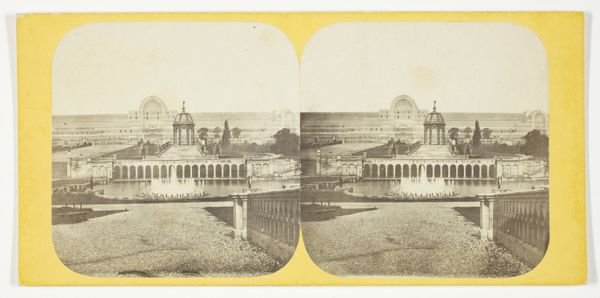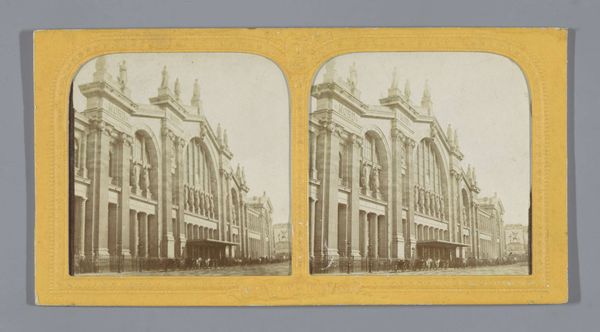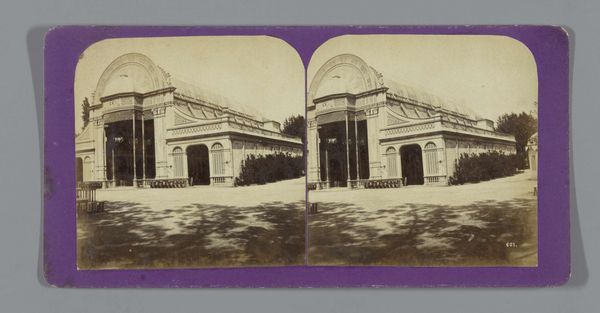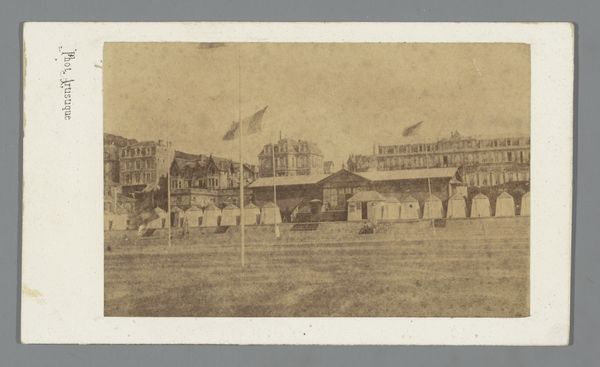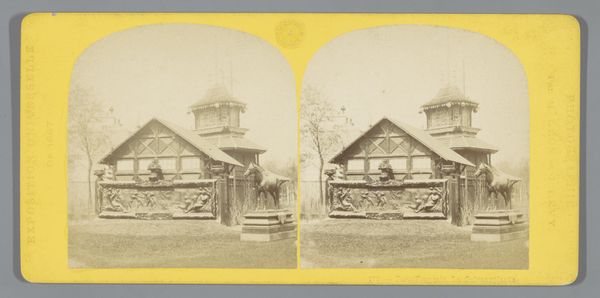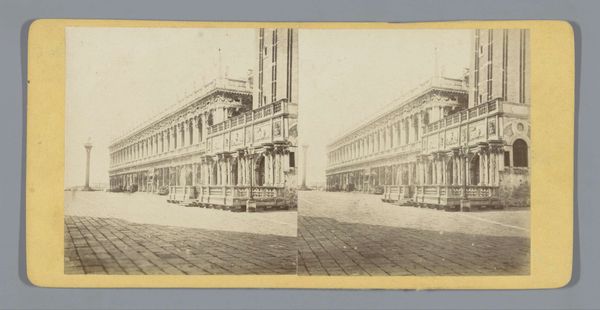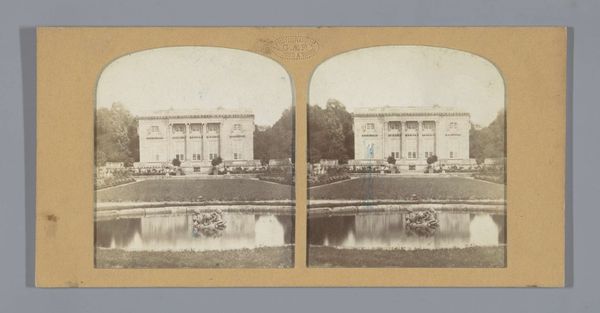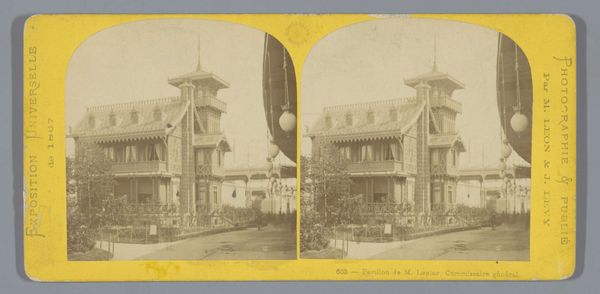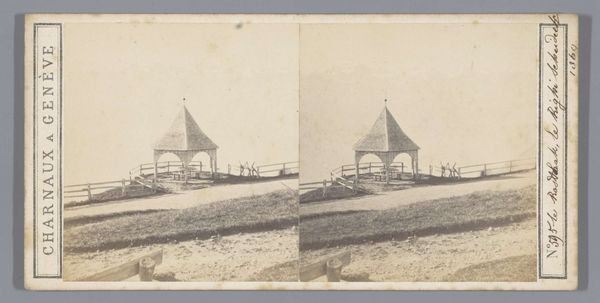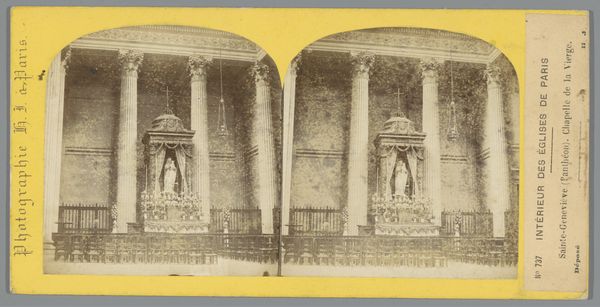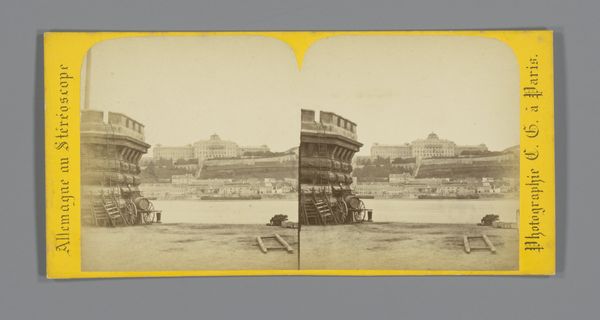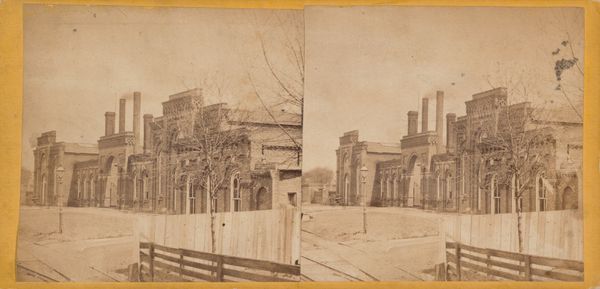
print, photography
# print
#
photography
#
coloured pencil
#
geometric
#
orientalism
#
cityscape
Dimensions: height 86 mm, width 174 mm
Copyright: Rijks Museum: Open Domain
Editor: So, this is Pieter Oosterhuis's "View of the Paleis voor Volksvlijt, Amsterdam" from 1865. It's a photograph, but presented as a stereo card. I'm immediately struck by the geometric forms of the building and how they contrast with the surrounding water and vegetation. It looks almost like an enormous crystal palace emerging from a swamp! What’s your take on this, from a historical perspective? Curator: What I see is a powerful symbol of 19th-century aspirations and anxieties. This “Palace of Industry” was intended to showcase Dutch progress and innovation, echoing London's Crystal Palace. The photograph becomes more than just a record; it's an artifact deeply embedded in the politics of imagery. Editor: Politics? In a building photo? Curator: Absolutely. Consider the timing. 1865—the Netherlands was navigating its place in a rapidly industrializing world. The Paleis was meant to project an image of strength and modernity, but this photograph, in its own way, reveals tensions. The sepia tone and slightly grainy texture evoke a sense of distance. The way it towers over what you called 'swamp' suggests dominance over nature but also possible fragility. Don't you think? Editor: That's fascinating! I hadn't considered the deliberate messaging behind it. It does make you wonder about who this building was for, who was allowed inside, and what values it represented. Curator: Exactly. Think about how photography itself was evolving as a tool of representation. Oosterhuis's work would have reached a broad audience. Was it purely celebratory, or did it also subtly critique the social changes of the time? Editor: I came in just looking at a building and its architectural forms, but now I'm thinking about the city itself, the Dutch empire, the emerging middle class and the Industrial Revolution. Thank you for broadening my perspective! Curator: And thank you for reminding me to look beyond the socio-political, to see the beautiful crystalline structure rising from the water. It’s always about the tension between those two things!
Comments
No comments
Be the first to comment and join the conversation on the ultimate creative platform.
